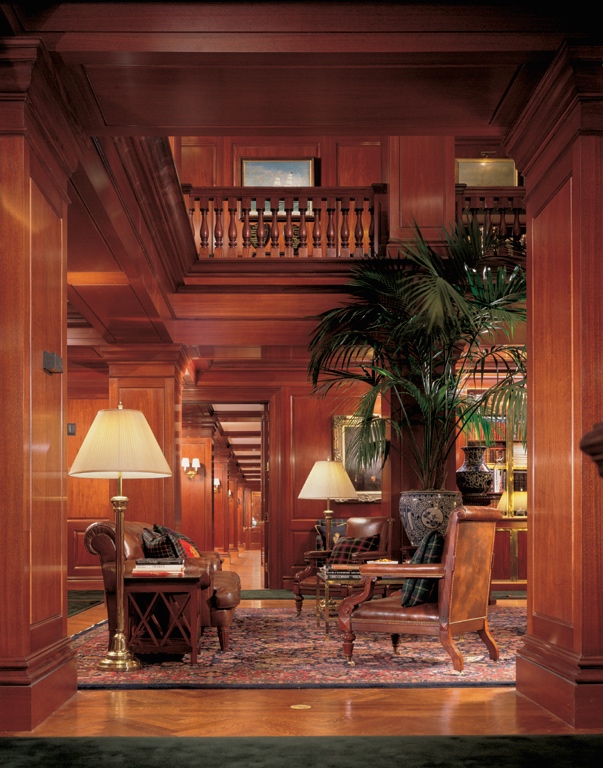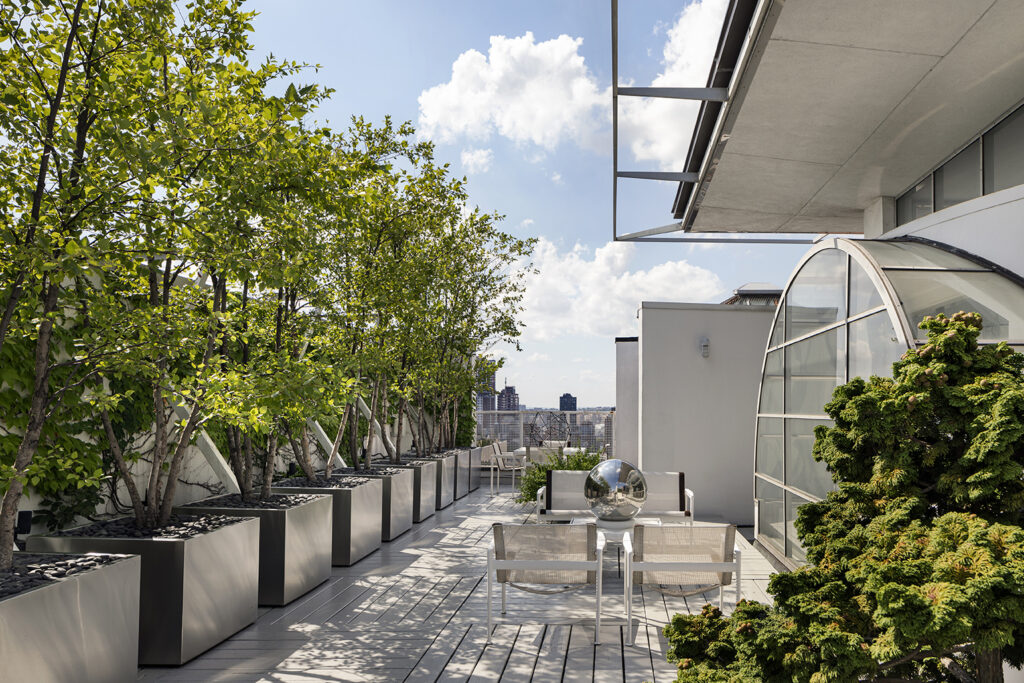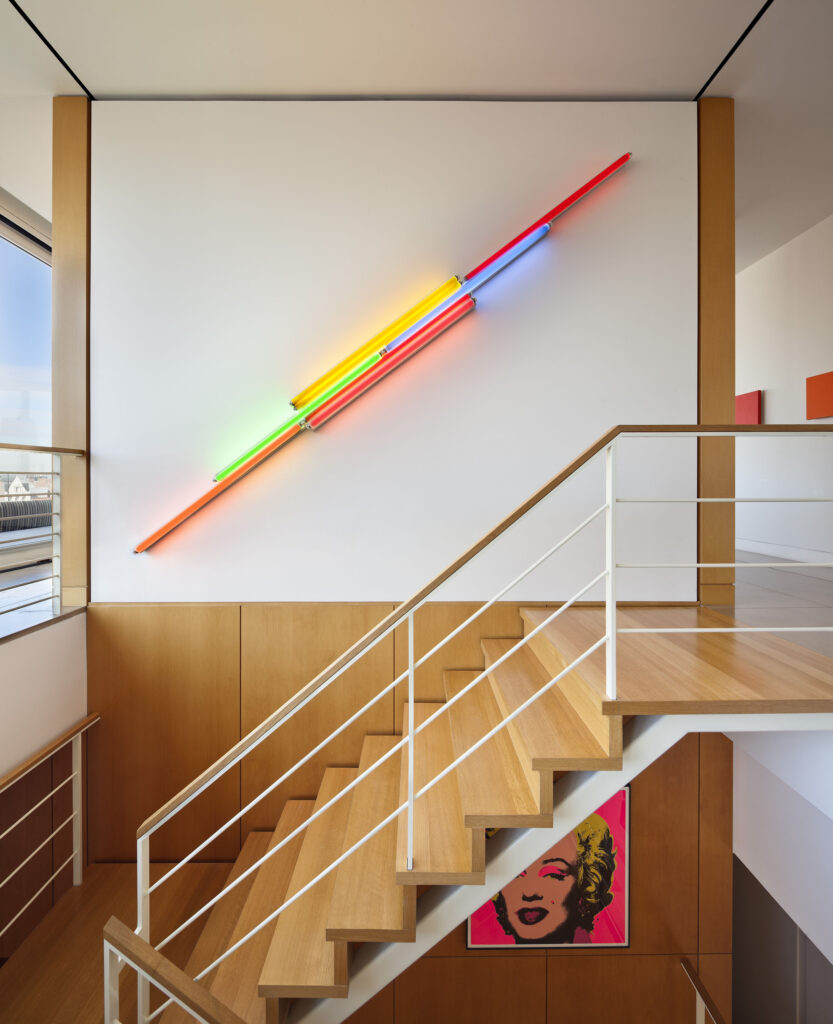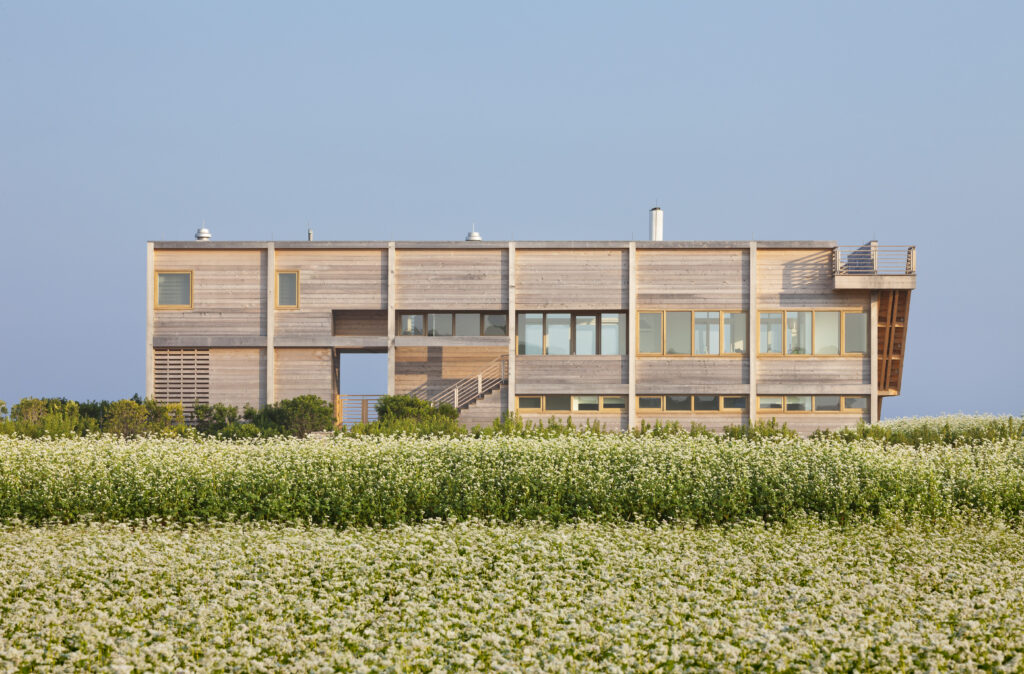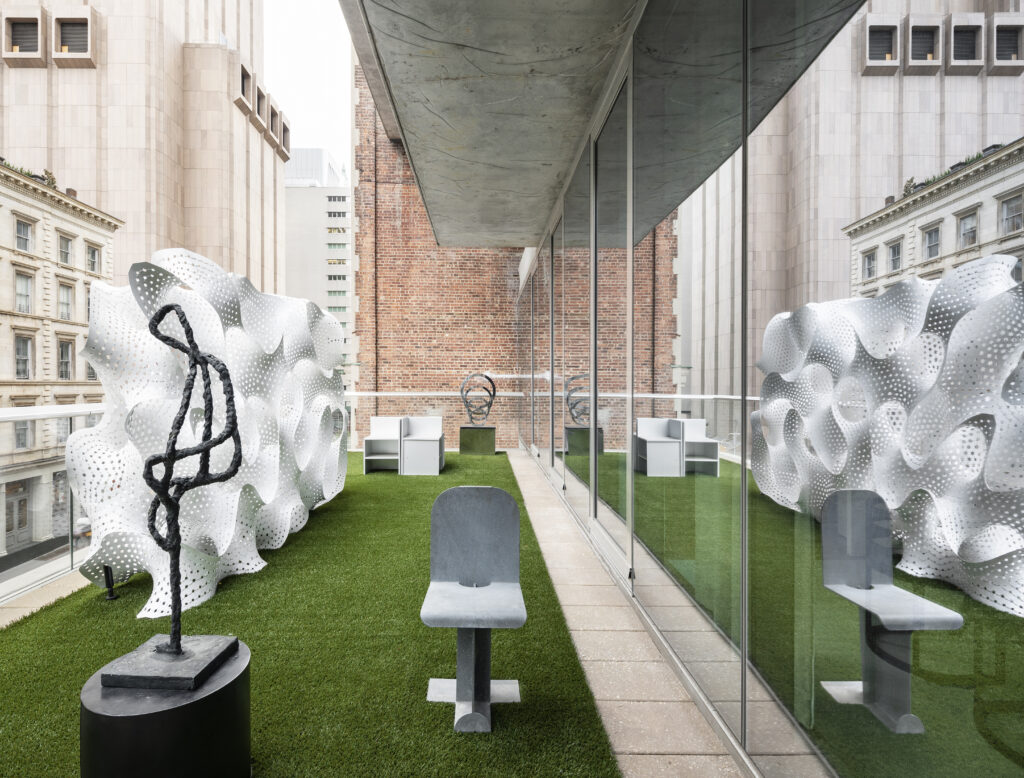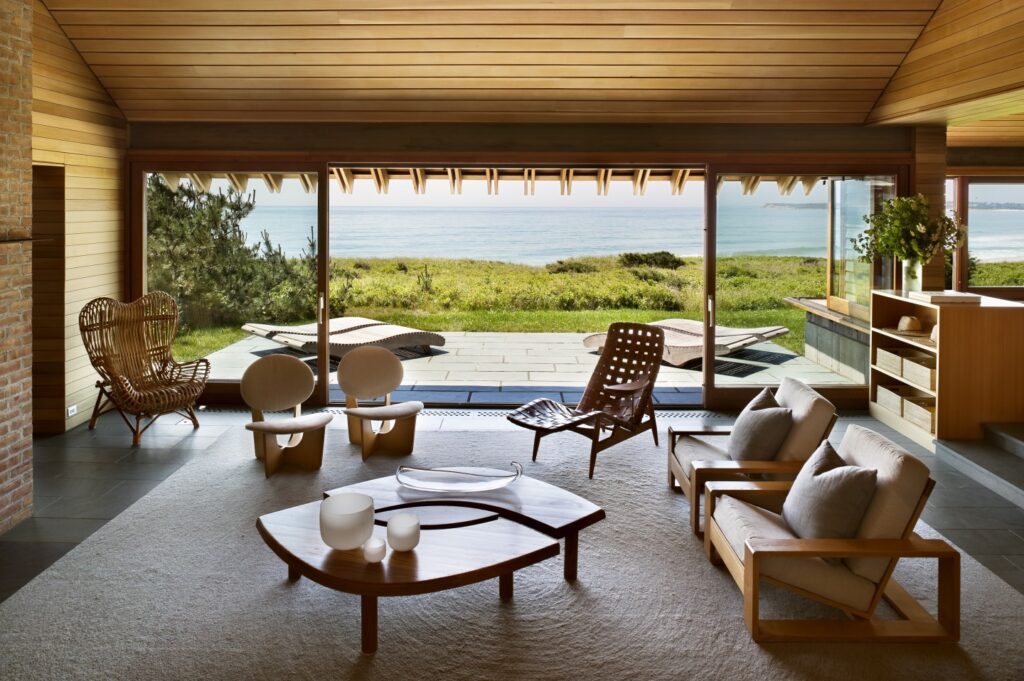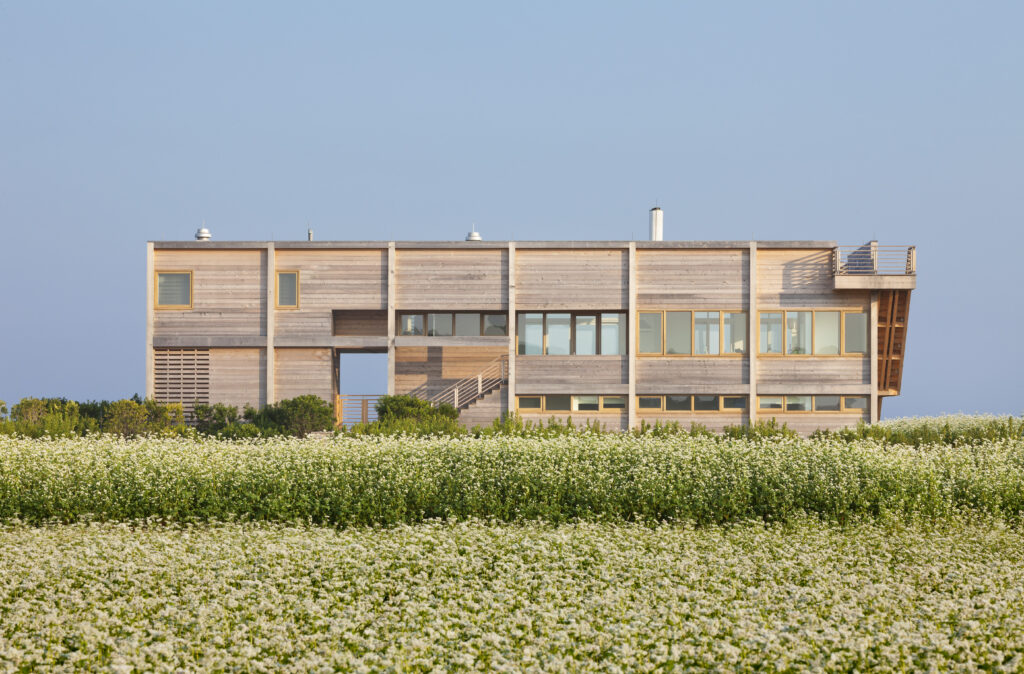
“Lee Mindel is a trailblazer, an innovator, a provocateur. The extraordinary structures, spaces, and myriad products he and the SheltonMindel team have created over the years are among the most memorable of our time. His elegant, streamlined interiors—distinctive for luxurious materials and finishes and expertly curated furnishings and collections—are known for their cerebral design gestures that reflect an uncommon artful mindfulness. Lee could bring even the most basic modern white box to brilliant, poetic life. Driven by intense passion and boundless intellectual curiosity, Lee is both a wise teacher and an eternal student, always seeking the next discovery.”
—Margaret Russell, design journalist and consultant
Interviewing Lee F. Mindel, FAIA, has long been a dream of mine. Co-founder of high profile, award winning architecture firm SheltonMindel, he creates dazzling spaces that reflect his brilliance as a Harvard-trained architect as well as his preternatural sensitivity to spatial expression. He has the eye of a curator, the heart of a poet, and the charisma of a superstar. Writer, photographer, collector, culture consumer, traveler, and expert, Mindel is known as the grand gentleman of the international design world.
I chose to kick off last week’s talk with Mindel by playing a passage from Gustav Mahler’s Symphony No. 3 in D Minor, one of the fin-de-siècle Viennese composer’most well known works. The parallels between Mindel and Mahler are striking: dark-haired, elegantly stylish, and superbly innovative. Just like Mahler, Mindel is one of the best composers of his time; he composes spaces that are musical and harmonious, and always modernist. As expected, our conversation was animated by inspiring philosophical ideas, because—his infectious passion notwithstanding—Mindel possesses an academic understanding of design and its interpretation.
Following his upbringing in a politically engaged, affluent Jewish family in New Jersey, Mindel attended the University of Pennsylvania. Although he set out to study medicine, his formal education concluded with a Master’s degree in Architecture from the Harvard Graduate School of Design. In 1978, he co-founded Shelton, Mindel & Associates (now known as SheltonMindel) with Peter Shelton, whom Mindel characterized as “an original thinker, scientist, creator, a friend; the most interesting person I have ever met.” Shelton and Mindel shared a love for the paradigm-shifting oeuvre of 20th-century American architect Louis Kahn, and consequently they fashioned the DNA of their practice around Kahn’s signature principles of light, nature, and simplicity. Sadly, Shelton passed away ten years ago. “I am the person I am because of Peter,” Mindel added with tears in his eyes.
To Mindel, architecture is a religion: sacred, all consuming, and capable of evoking spiritual experiences. He travels extensively to enlarge his professional wisdom, experiencing the world’s architecture firsthand while capturing it through the lenses of his four cameras. These excursions were frequently documented in his column for Architectural Digest, The Architect’s Eye. At the moment, Mindel is in the process of opening a design gallery on the ground floor of 56 Leonard Street, the 57-story skyscraper in New York designed by renowned Swiss architecture firm Herzog & de Meuron. Mindel’s vision is to name the space 56 after its address and develop a rotating exhibitions of collectible design. He plans to curate much of the program himself, working in collaboration with some of the world’s best design galleries. Design world insiders are eagerly awaiting the launch of this new venture.
The first stop on our journey through Mindel’s impressive portfolio was his home, the Long Island Waterside Compound designed in collaboration with architect Reed A. Morrison (the son of Helen and Murdo D. Morrison, who met and married while working for the legendary Saarinen firm in Bloomfield Hills, Michigan). The property includes a main house, pool house, garage, and pool. Sited between the street and the seaside, the house was designed to appear low-key from the street while gradually opening up to the gorgeous expanse leading to the water. The compound’s interiors are furnished with masterpieces created by the likes of Jean Prouvé, Charlotte Perriand, and Le Corbusier, allowing Mindel to remain in perpetual creative dialogue with his favorite masters of modernism.
Furniture, Mindel told us, has the ability to introduce warmth into modernist homes. The soft, organic shapes seen in furniture by, for example, Jean Royère, Mathieu Mategot, and Arne Jacobsen offer a welcoming counterpoint to the severe geometry of modernist concrete and glass structures.
Mindel’s partiality for the organic modernism of mid-century Scandinavian design has shaped many of his interiors. He has crisscrossed the Nordic region and along the way came to know the furniture so well that he can immediately recognize the subtle distinctions between Swedish, Danish, and Finnish aesthetics. In addition to collecting Scandinavian pieces personally and utilizing them widely in his projects, Mindel played a key role in resuscitating the valuation of this classic body of work, which fell completely out of favor by the 1980s. He is credited with rediscovering it in the 1990s, introducing a sense of glamor to what was once seen as faded vintage castoffs.
The Nordic Design auction that Mindel curated for Phillips London in 2011 is seen as a turning point in the market. It consisted of masterpieces by Danish, Swedish, and Finnish designers showcased in a breathtaking museum-like show. Mindel’s catalog for the sale offered compelling contextualization for the objects while also elevating their visual presentation to appeal to contemporary audiences. Mindel considers himself to be a modernist architect at heart, but his version of modernism is completely attuned to our time.
The unique genius of a multi-hyphenate like Mindel can be hard to summarize, but editor Suzy Slesin offer this: “Apart from being a talented architect and sublime interior designer,” she told me, “Lee has never lost his sense of humor, playfulness, and theater. Not only is he a masterful space planner, but he has an encyclopedic knowledge of contemporary and modernist furniture—especially in the realm of Scandinavian pieces—as well as contemporary art, ceramics, and glass accessories that make his interiors so interesting.”
This playful humor was on full display during our conversation, encapsulated in his response to an audience question. “Do you have a dream project that you haven’t done yet?” he was asked. “The next one,” he said with a wink. This article was published today in Forum Magazine, by Design Miami/.
